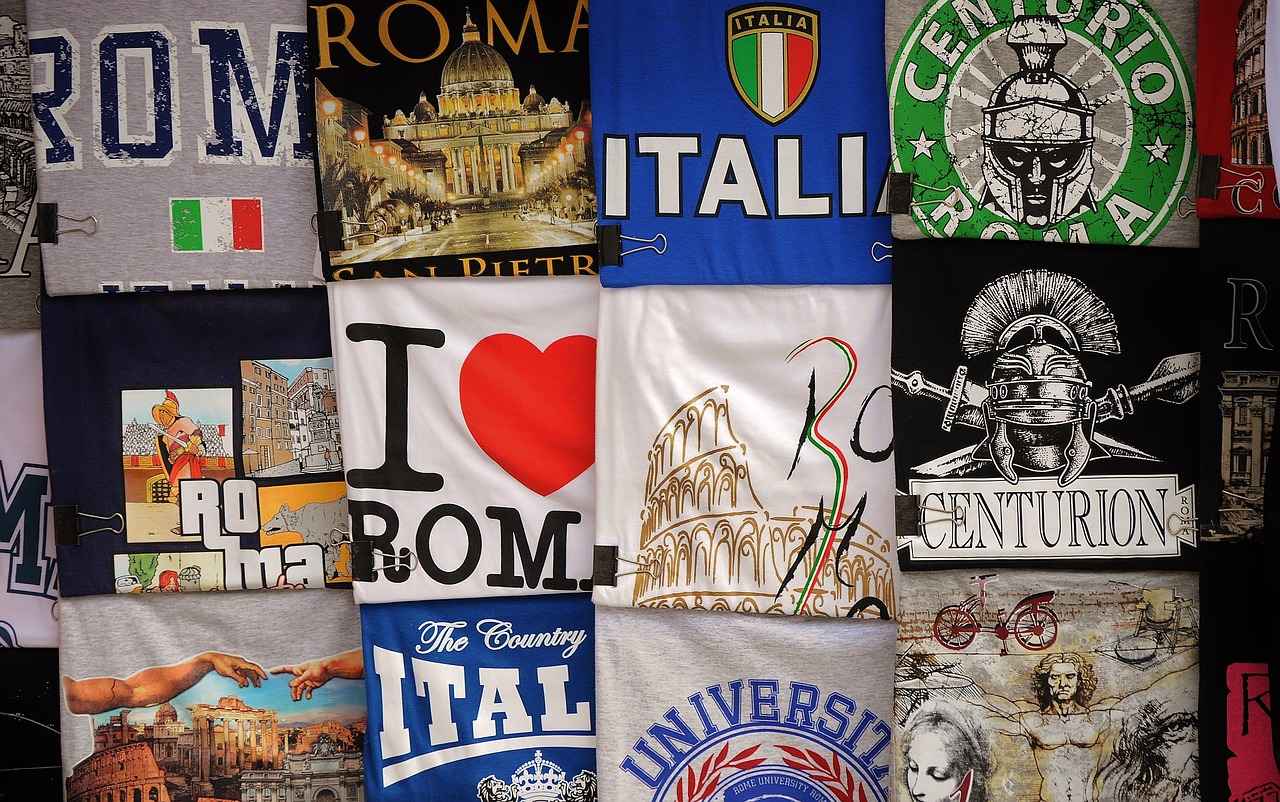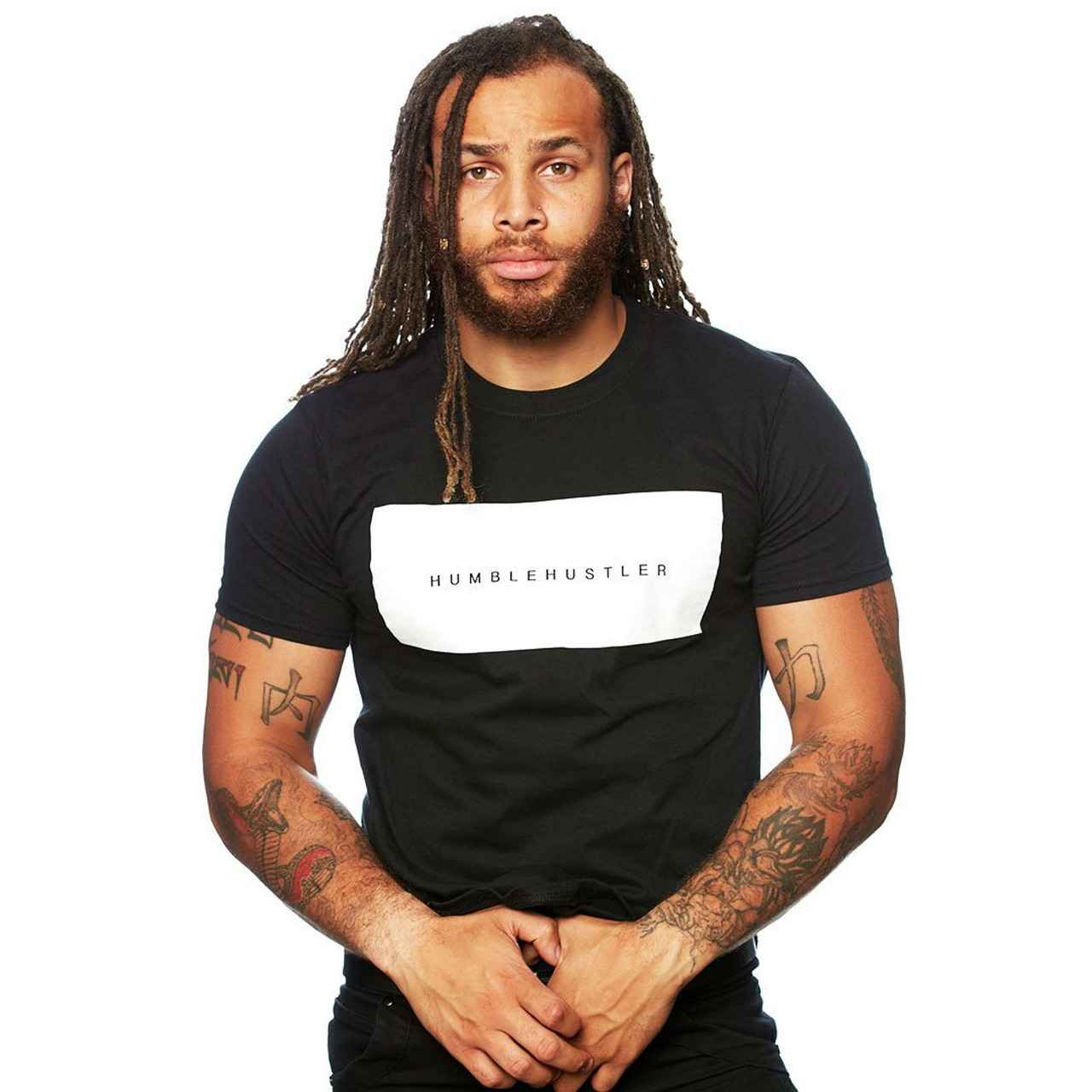This article provides a comprehensive guide on ordering custom t-shirts online, covering everything from design to delivery, ensuring you have all the information needed for a successful purchase.
Ordering custom t-shirts online can be an exciting yet overwhelming experience. With a myriad of options available, it’s essential to navigate the process effectively. This guide will walk you through each step, ensuring you make informed decisions from start to finish.
Understanding Custom T-Shirt Options
When considering custom t-shirts, it’s important to explore various styles, materials, and sizes. Whether you prefer a classic crew neck or a trendy crop top, knowing your options will help you select the perfect t-shirt for your needs.
Choosing the Right Design for Your T-Shirt
Creating a design that resonates with your audience is crucial. Consider graphics, fonts, and color schemes that enhance your message. Engaging designs can significantly impact the appeal of your custom t-shirt.
Utilizing Design Tools and Software
There are numerous online design tools available that cater to both beginners and experts. These tools allow you to create unique, professional-looking designs without needing extensive graphic design skills.
- Free Design Tools: Perfect for budget-conscious creators.
- Paid Design Tools: Offer advanced features for a more polished look.
Understanding T-Shirt Printing Techniques
Familiarize yourself with various printing methods such as screen printing and direct-to-garment (DTG). Each method has its own implications for quality and cost, so choose wisely based on your design and budget.
Finding a Reputable Online T-Shirt Printer
Research is key when selecting a printing service. Look for customer reviews, portfolios, and responsive customer service to ensure you are making a reliable choice.
Placing Your Order: Step-by-Step
Once you’ve finalized your design and selected a printer, follow a detailed process:
- Select your t-shirt style and quantity.
- Upload your design and customize as needed.
- Review your order carefully before submitting.
Understanding Shipping and Delivery Options
Be aware of the different shipping options available. Consider the estimated delivery times and costs to ensure your custom t-shirts arrive when you need them.
Post-Purchase Tips for Custom T-Shirts
To maintain the quality of your t-shirts, follow proper care instructions, including washing and storing tips. This will ensure your custom creations last for years to come.
By following this guide, you can confidently navigate the process of ordering custom t-shirts online, from conception to delivery, making your experience enjoyable and successful.

Understanding Custom T-Shirt Options
When it comes to ordering custom t-shirts, understanding the various options available is crucial for making the right choice. This section will delve into the different types of custom t-shirts, focusing on styles, materials, and sizes to help you select the perfect option for your needs.
Styles of Custom T-Shirts
- Classic Crew Neck: A timeless style that suits all body types and is perfect for casual wear.
- V-Neck: Offers a more fashionable look and is often preferred for a dressier appearance.
- Raglan: Features contrasting sleeves, making it a popular choice for sports and team wear.
- Tank Tops: Ideal for warm weather or workouts, providing a comfortable and breathable option.
- Long Sleeve: Great for cooler climates, offering additional coverage while still looking stylish.
Materials Used in Custom T-Shirts
- Cotton: Soft, breathable, and comfortable, cotton is the most common material for t-shirts.
- Polyester: Known for its durability and moisture-wicking properties, making it suitable for active wear.
- Blends: Combining cotton and polyester offers the best of both worlds, balancing comfort and durability.
- Organic Cotton: An eco-friendly choice that is grown without harmful chemicals, appealing to environmentally conscious consumers.
Sizes to Consider
Custom t-shirts are available in a wide range of sizes, from small to 3XL or larger. It’s important to refer to the sizing charts provided by the supplier to ensure a proper fit. Considerations for size include:
- Body Type: Different styles may fit differently, so it’s essential to choose a size that complements your body shape.
- Intended Use: If the t-shirt is for a specific event or activity, ensure the size allows for comfort and movement.
By understanding these various options for custom t-shirts, you can make an informed decision that aligns with your personal style and practical needs.

Choosing the Right Design for Your T-Shirt
Creating a custom t-shirt that stands out and resonates with your audience is essential for effective branding or personal expression. Here are some key considerations to help you select or create an impactful design:
- Know Your Audience: Understanding your target demographic is crucial. Consider their age, interests, and preferences. For instance, a design aimed at teenagers might lean towards vibrant colors and trendy graphics, while a design for adults may favor a more subdued palette and sophisticated imagery.
- Graphics: Choose graphics that are not only visually appealing but also relevant to your message. High-quality images or illustrations can make a significant difference. Consider using vector graphics for scalability without losing quality. Additionally, ensure that the graphics are not overly complex, as simpler designs often have a stronger impact.
- Fonts Matter: Typography plays a vital role in design. Select fonts that align with your brand’s personality. For example, a playful brand might use a fun, casual font, while a professional brand might choose a clean, sans-serif typeface. Make sure the text is legible from a distance, and avoid using too many different font styles in one design.
- Color Schemes: Colors evoke emotions and can significantly influence perception. Use color theory to select a palette that resonates with your audience. For instance, blue often conveys trust, while red can evoke excitement. Tools like Adobe Color can help you create harmonious color combinations.
- Test and Iterate: Before finalizing your design, consider creating mock-ups or prototypes. Gather feedback from your audience to see how they respond to your design. This iterative process can help you refine your design for maximum appeal.
In conclusion, choosing the right design for your t-shirt involves a careful blend of audience understanding, graphic selection, typography, and color usage. By focusing on these elements, you can create a design that not only looks great but also resonates deeply with your intended audience.
Utilizing Design Tools and Software
In today’s digital age, creating a unique and professional-looking t-shirt design has never been easier, even for those without graphic design expertise. With a plethora of online design tools and software available, you can bring your creative vision to life efficiently and effectively.
Many of these tools offer user-friendly interfaces and a variety of features that cater to different skill levels. Here are some key categories of design tools you might consider:
- Graphic Design Software: Programs like Adobe Illustrator and CorelDRAW provide advanced features for professional designers. However, they may have a steep learning curve for beginners.
- Online Design Platforms: Websites like Canva and Placeit allow users to create stunning designs using simple drag-and-drop functionalities. These platforms often include pre-made templates tailored for t-shirts.
- Free Design Tools: Tools such as GIMP and Inkscape are great for those on a budget. They offer robust features similar to paid software but require some time to learn.
- Mobile Apps: For those who prefer designing on-the-go, apps like Over and Adobe Spark Post enable quick edits and designs right from your smartphone.
When choosing a design tool, consider your specific needs, such as:
- Budget: Determine if you prefer a free tool or are willing to invest in a paid option for more advanced features.
- Design Complexity: Assess whether you need a simple template or a more customizable platform.
- Accessibility: Ensure the tool is easy to navigate and compatible with your devices.
Additionally, many of these platforms provide design templates that can significantly streamline your creation process. Templates allow for quick customization, ensuring your designs maintain a professional appearance without starting from scratch.
In conclusion, leveraging the right design tools and software can empower anyone to create eye-catching t-shirt designs. By exploring various options and understanding your preferences, you can confidently embark on your custom t-shirt journey.
Free vs. Paid Design Tools
When it comes to creating stunning designs for your custom t-shirts, choosing the right design tool is crucial. The decision between free and paid design tools can significantly affect your workflow, budget, and the quality of your final product. This section will help you examine the differences, enabling you to make an informed choice that aligns with your budget and design needs.
| Feature | Free Design Tools | Paid Design Tools |
|---|---|---|
| Cost | Free to use, often with limited features | Requires a subscription or one-time payment |
| Features | Basic tools and functionalities | Advanced features, including professional-grade tools |
| Support | Limited or community-based support | Dedicated customer support and resources |
| Templates | Fewer templates available | Extensive library of customizable templates |
| Updates | Infrequent updates | Regular updates with new features |
Free design tools can be a great starting point, especially for beginners or those on a tight budget. They often provide essential tools for basic designs and allow users to familiarize themselves with design concepts. However, these tools may lack advanced features that can enhance the quality and uniqueness of your designs.
On the other hand, paid design tools offer a wealth of features that cater to more experienced designers. From advanced editing capabilities to a vast selection of templates and resources, these tools can significantly streamline the design process and improve the final product’s quality.
Ultimately, the choice between free and paid design tools depends on your specific needs, budget, and design aspirations. Assessing your requirements will help you determine which option is best suited for your custom t-shirt project.
Design Templates for Quick Customization
In today’s fast-paced world, design templates have emerged as a vital resource for individuals and businesses looking to create custom products, particularly t-shirts. These templates not only save time but also ensure a professional appearance that can be tailored to meet specific needs.
One of the primary advantages of using design templates is the streamlined creation process. Rather than starting from scratch, users can select from a variety of pre-designed layouts that suit their style and purpose. This feature is especially beneficial for those who may not have extensive graphic design skills, as it allows for quick customization without sacrificing quality.
When utilizing design templates, you can easily modify elements such as colors, fonts, and graphics. This flexibility means that even a novice can create a unique design that reflects their personal or brand identity. For example, many online platforms offer user-friendly interfaces that guide you through the customization process, making it accessible to everyone.
| Benefits of Using Design Templates | Description |
|---|---|
| Time Efficiency | Templates reduce the time spent on design, allowing for quicker turnaround times. |
| Professional Quality | Pre-designed templates ensure a polished look that enhances brand image. |
| Ease of Use | Simple customization options make it accessible for users with varying skill levels. |
Moreover, design templates can cater to specific occasions, whether it’s for a corporate event, family reunion, or a sports team. This adaptability ensures that your t-shirt design is not only appealing but also relevant to your intended audience.
In conclusion, embracing design templates can significantly enhance your custom t-shirt creation process. By allowing for quick customization while maintaining a professional appearance, these templates serve as an invaluable tool for anyone looking to make a statement through their apparel.
Understanding T-Shirt Printing Techniques
When it comes to creating custom t-shirts, the printing method you choose plays a crucial role in the final product’s quality, durability, and overall cost. Below, we explore three popular printing techniques: screen printing, direct-to-garment (DTG), and heat transfer, highlighting their unique characteristics and implications.
| Printing Method | Quality | Cost | Best For |
|---|---|---|---|
| Screen Printing | High quality with vibrant colors | Lower cost for bulk orders | Large quantities and simple designs |
| Direct-to-Garment (DTG) | Excellent detail and color range | Higher cost for small orders | Small runs and complex designs |
| Heat Transfer | Good quality but less durable | Moderate cost, varies with design | Small orders and quick designs |
Screen Printing is one of the most traditional methods, ideal for bulk orders. It involves creating a stencil (or screen) and using it to apply layers of ink on the fabric. This method is known for producing vibrant colors and lasting prints, making it a favorite for businesses and events.
On the other hand, Direct-to-Garment (DTG) printing allows for intricate designs and a wide range of colors. This method works like a regular inkjet printer, printing directly onto the fabric. While it offers excellent detail, it is generally more expensive for smaller quantities.
Heat Transfer printing involves transferring a design from a special paper onto the t-shirt using heat and pressure. This method is versatile and suitable for small orders, but the prints may not be as durable as screen printed designs.
In conclusion, understanding these printing techniques is essential for making an informed decision when ordering custom t-shirts. Each method has its pros and cons, and the right choice depends on your specific needs, including design complexity, quantity, and budget.

Finding a Reputable Online T-Shirt Printer
When venturing into the world of custom t-shirt printing, it is crucial to find a reputable online t-shirt printer to ensure quality, reliability, and customer satisfaction. Here are some essential tips to help you identify trustworthy services:
- Check Customer Reviews: Start by looking for customer feedback on various platforms. Websites like Trustpilot, Google Reviews, and social media can provide insights into the experiences of previous customers. Pay attention to both positive and negative reviews to get a balanced view.
- Examine Portfolios: A reputable printer should showcase a portfolio of their work. Look for examples that demonstrate the quality of their printing and the variety of designs they can produce. This will give you a sense of their style and capabilities.
- Assess Customer Service: Reach out to the printer’s customer service with any questions or concerns. A responsive and helpful team can indicate a company that values its customers. Prompt communication is key in resolving any issues that may arise.
- Compare Pricing: While price shouldn’t be the sole factor, it’s essential to compare quotes from different printers. Ensure that the prices reflect the quality of the materials and printing techniques used. Remember, the cheapest option may not always be the best.
- Look for Guarantees: Trustworthy printers often offer satisfaction guarantees or return policies. This shows confidence in their product and commitment to customer satisfaction.
By focusing on these aspects, you can confidently select an online t-shirt printing service that meets your needs and expectations. A little research can go a long way in ensuring your custom t-shirts turn out exactly as you envisioned.
Evaluating Customer Reviews
In today’s digital age, customer feedback plays a crucial role in determining the quality and reliability of online t-shirt printers. When considering a service, it’s essential to understand how to interpret reviews effectively to make informed decisions. This guide will help you navigate through customer feedback, ensuring you choose a printer that meets your expectations.
Firstly, it’s important to identify the source of the reviews. Reputable platforms such as Trustpilot, Google Reviews, and social media sites often provide a wealth of feedback from genuine customers. Look for printers with a significant number of reviews, as this can indicate a more reliable assessment of their services.
Next, pay attention to common themes in the reviews. If multiple customers mention issues with print quality, delivery times, or customer service, it’s a red flag. Conversely, consistent praise for a printer’s attention to detail or responsiveness can be a good sign of reliability. Here’s a simple table to help you categorize the feedback:
| Aspect | Positive Feedback | Negative Feedback |
|---|---|---|
| Print Quality | Vibrant colors, sharp images | Faded prints, incorrect colors |
| Delivery Time | On-time delivery, fast shipping | Delayed shipments, missed deadlines |
| Customer Service | Helpful, responsive team | Poor communication, unhelpful staff |
Furthermore, consider the overall rating of the printer. A high average rating is generally a positive indicator, but it’s crucial to delve deeper into individual reviews to understand the context behind those ratings. Look for detailed reviews that explain the customer’s experience rather than just star ratings.
Finally, trust your instincts. If something feels off about a printer based on the reviews, it might be worth exploring other options. By effectively evaluating customer feedback, you can ensure that your choice of online t-shirt printer aligns with your quality and service expectations.
Comparing Pricing and Services
When it comes to ordering custom t-shirts, among different providers is crucial for ensuring you receive the best value for your investment. Here’s a comprehensive guide to help you navigate this process effectively.
First, create a list of potential vendors by conducting a quick online search. Look for companies that specialize in custom t-shirt printing and have a strong online presence. Once you have your list, consider the following factors:
- Pricing Structure: Check if the pricing is transparent. Some companies may have hidden fees for setup, shipping, or design adjustments. Ensure you understand the total cost before making a decision.
- Minimum Order Quantities: Some providers may require a minimum order, which can affect your budget. Make sure their minimum order aligns with your needs.
- Quality of Materials: Compare the fabric types and printing techniques offered. Higher quality materials may have a higher upfront cost but can lead to better durability and customer satisfaction.
- Turnaround Time: Review the estimated production and shipping times. If you need your shirts by a specific date, ensure the provider can meet your timeline.
- Customer Support: Evaluate the level of customer service provided. Responsive support can make a significant difference if you encounter issues during the ordering process.
After gathering this information, create a comparison table to visualize the differences among the providers. This table can include columns for pricing, quality ratings, turnaround times, and customer support ratings.
| Provider | Price per Shirt | Material Quality | Turnaround Time | Customer Support |
|---|---|---|---|---|
| Provider A | $15 | High | 2 weeks | Excellent |
| Provider B | $12 | Medium | 1 week | Good |
| Provider C | $18 | High | 3 weeks | Average |
By analyzing this data, you can make an informed decision that balances cost with quality and service. Remember, the cheapest option isn’t always the best; consider all factors to ensure a successful custom t-shirt order.

Placing Your Order: Step-by-Step
Ordering custom t-shirts online can be a straightforward process if you follow a detailed step-by-step guide. This section will walk you through each stage, ensuring that you make informed decisions from start to finish.
- Select Your Quantity: Begin by determining how many t-shirts you need. Consider factors such as event size or group needs, as bulk orders often come with discounts.
- Choose Your Styles: Browse through various styles available, including crew necks, v-necks, and tank tops. Each style may come in different materials like cotton, polyester, or blends.
- Pick Your Sizes: Ensure you select a range of sizes that cater to your audience. It’s advisable to have a size chart handy to avoid confusion.
- Customize Your Design: Upload your artwork or use the online design tool provided by the printer. Make sure your design is high-resolution to maintain quality during printing.
- Review Your Design: Take a moment to double-check your design placement, colors, and text for any errors. This step is crucial to avoid mistakes that could result in additional costs.
- Finalize Payment: Once you are satisfied with your order, proceed to the payment section. Choose a secure payment method, such as credit card or PayPal.
- Select Shipping Options: Choose your preferred shipping method based on urgency and cost. Review estimated delivery times to ensure your t-shirts arrive on schedule.
After completing these steps, you should receive a confirmation email summarizing your order details. If you have any questions or changes, don’t hesitate to reach out to customer service for assistance.
By following this step-by-step process, you can confidently place your custom t-shirt order, ensuring a smooth transaction and a product that meets your expectations.
Reviewing Your Order Before Submission
When it comes to ordering custom t-shirts online, is a critical step that can save you from costly mistakes. It’s easy to overlook details when you are excited about your design, but taking a moment to double-check can make all the difference.
First and foremost, ensure that the design you have chosen is exactly what you want. Look closely at the graphics, logos, and any text included on the shirt. Sometimes, minor errors can occur during the upload process, leading to misalignment or incorrect colors. A careful review can help you spot these issues before the t-shirts are printed.
Next, pay attention to the sizes you’ve selected. It’s important to have a clear understanding of the sizing chart provided by the printer. Sizes can vary significantly between brands, so make sure you’re ordering the right fit for your audience. If you are ordering for a group, consider gathering size preferences in advance to avoid ordering too many of one size.
Additionally, verify the quantities of each size and design. It’s not uncommon to miscount or accidentally order more than intended. Double-checking your quantities can prevent excess inventory and unnecessary expenses.
Finally, take a moment to review your shipping information. Ensure that the address is correct and that you have selected the appropriate shipping method to meet your timeline. Delays in shipping can disrupt your plans, especially if you need the shirts for a specific event.
In conclusion, by dedicating a few extra minutes to review your order before finalizing it, you can avoid potential headaches and ensure that your custom t-shirts turn out exactly as you envisioned. Remember, a thorough review is an essential part of the ordering process that can save you time and money in the long run.
Understanding Shipping and Delivery Options
When ordering custom t-shirts online, it is crucial to consider the shipping and delivery options available to ensure your items arrive on time. Different providers offer various services, and understanding these can save you both time and money.
Firstly, it’s important to evaluate the estimated delivery times for each shipping method. Most online t-shirt printers provide options such as:
- Standard Shipping: Typically the most economical option, but may take 5-10 business days.
- Expedited Shipping: Faster delivery, usually within 2-3 business days, at a higher cost.
- Overnight Shipping: The quickest option, ensuring delivery by the next day, ideal for urgent needs but often very expensive.
Next, you should also consider the cost of shipping. Shipping fees can vary significantly based on the method chosen, the size of your order, and the destination. Some companies may offer:
- Free Shipping: Often available for orders over a certain amount.
- Flat Rate Shipping: A fixed fee regardless of order size, which can be beneficial for larger purchases.
To make an informed decision, compare the shipping options provided by different vendors. Look for reviews or testimonials regarding their delivery reliability and customer service. This can give you insight into whether they meet their promised delivery times and how they handle any potential issues.
Finally, always check the tracking options available with your shipping method. Being able to track your order in real-time can provide peace of mind and help you plan for its arrival.
By thoroughly examining these shipping and delivery options, you can ensure that your custom t-shirts arrive when you need them, without unnecessary delays or unexpected costs.

Post-Purchase Tips for Custom T-Shirts
After investing in custom t-shirts, it’s essential to ensure they remain in excellent condition for as long as possible. Proper care not only enhances the appearance of your shirts but also extends their lifespan. Here are some vital tips to help you maintain your custom t-shirts.
- Read Care Labels: Always check the care label for specific washing instructions provided by the manufacturer.
- Use Cold Water: Wash your t-shirts in cold water to prevent colors from fading and to minimize shrinkage.
- Gentle Cycle: Select a gentle wash cycle to protect the fabric and print quality.
- Turn Inside Out: Turn your t-shirts inside out before washing to protect the graphic prints from abrasion.
- Avoid Bleach: Never use bleach or harsh detergents, as they can damage the fabric and prints.
- Air Dry: Whenever possible, air dry your t-shirts to prevent shrinkage and damage from high heat.
- Low Heat: If using a dryer, opt for a low heat setting to minimize potential harm.
- Avoid Over-Drying: Remove t-shirts from the dryer while slightly damp to reduce wrinkles.
- Fold Properly: Fold t-shirts neatly to avoid creases and maintain their shape.
- Store in a Cool, Dry Place: Keep your t-shirts away from direct sunlight and moisture to prevent fading and mildew.
- Use Hangers for Certain Styles: For t-shirts with embellishments, consider hanging them to prevent wrinkles.
By following these simple yet effective care tips, you can ensure your custom t-shirts remain vibrant and comfortable for years to come. Remember, a little effort in maintenance goes a long way in preserving your investment.
Frequently Asked Questions
- What types of custom t-shirts can I order?
You can choose from a variety of styles, materials, and sizes when ordering custom t-shirts. Whether you want a classic crew neck, a trendy v-neck, or even a tank top, there’s something for everyone!
- How do I create a design for my t-shirt?
Creating a design is easy! You can use online design tools that offer templates and customization options. Just pick your graphics, fonts, and colors, and you’re good to go!
- What printing techniques are available?
There are several printing methods, including screen printing, direct-to-garment (DTG), and heat transfer. Each method has its pros and cons regarding quality and cost, so choose one that fits your needs!
- How can I find a reliable online t-shirt printer?
Look for online printers with positive customer reviews, a solid portfolio, and responsive customer service. This will help ensure you’re working with a reputable provider.
- What should I do before finalizing my order?
Always double-check your order details! Make sure your design, sizes, and quantities are correct to avoid any mishaps.
- What are my shipping options?
Shipping options vary by provider. You can usually choose between standard, expedited, or express shipping, so pick one that meets your timeline and budget!
- How do I care for my custom t-shirts?
To keep your t-shirts looking fresh, wash them in cold water and hang them to dry. Avoid using bleach and high heat to maintain their quality!












